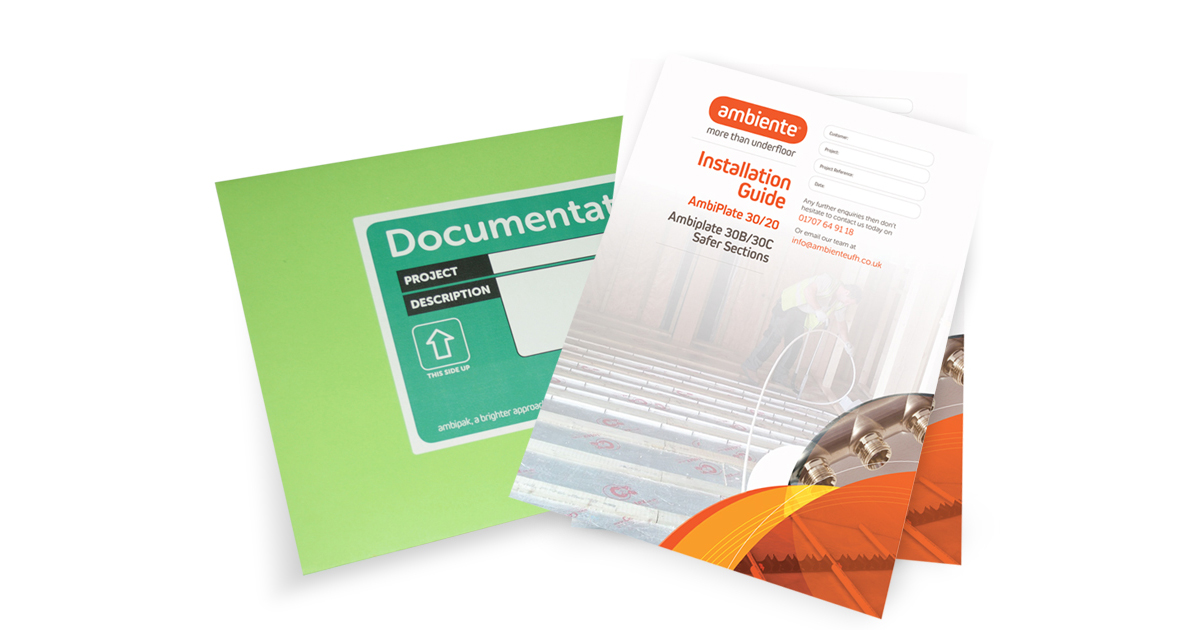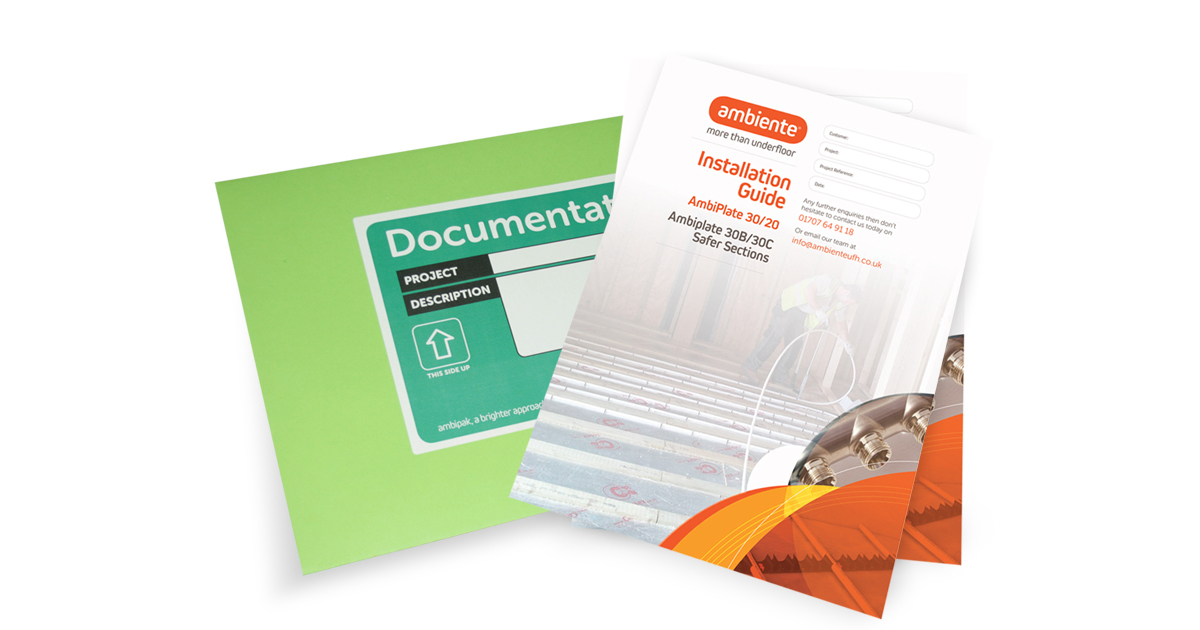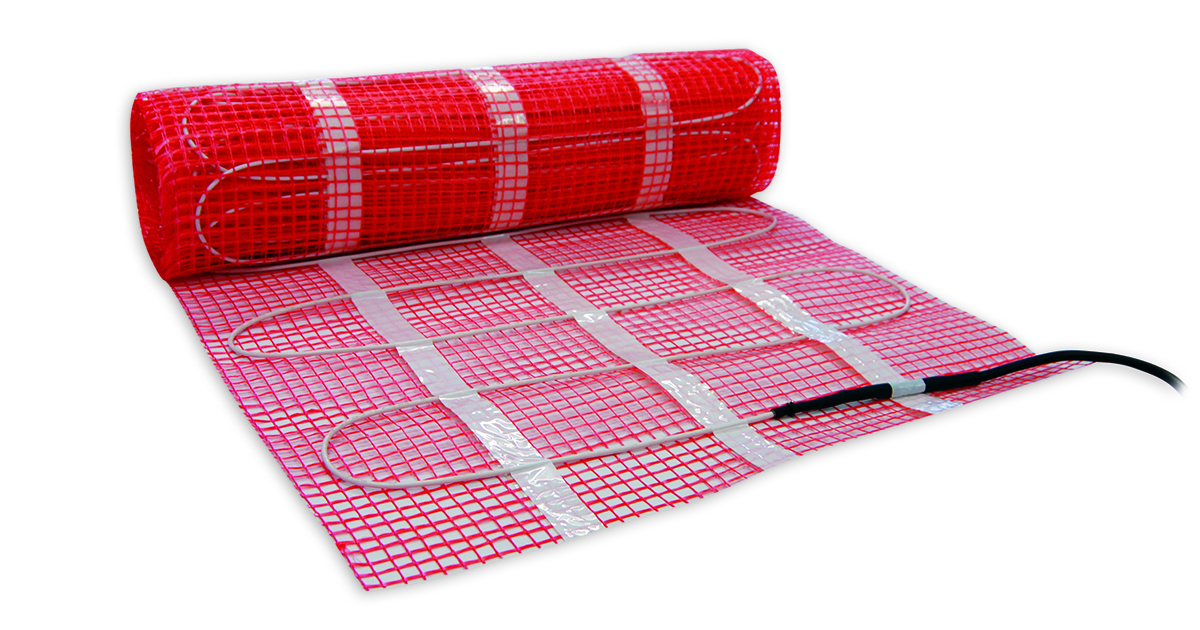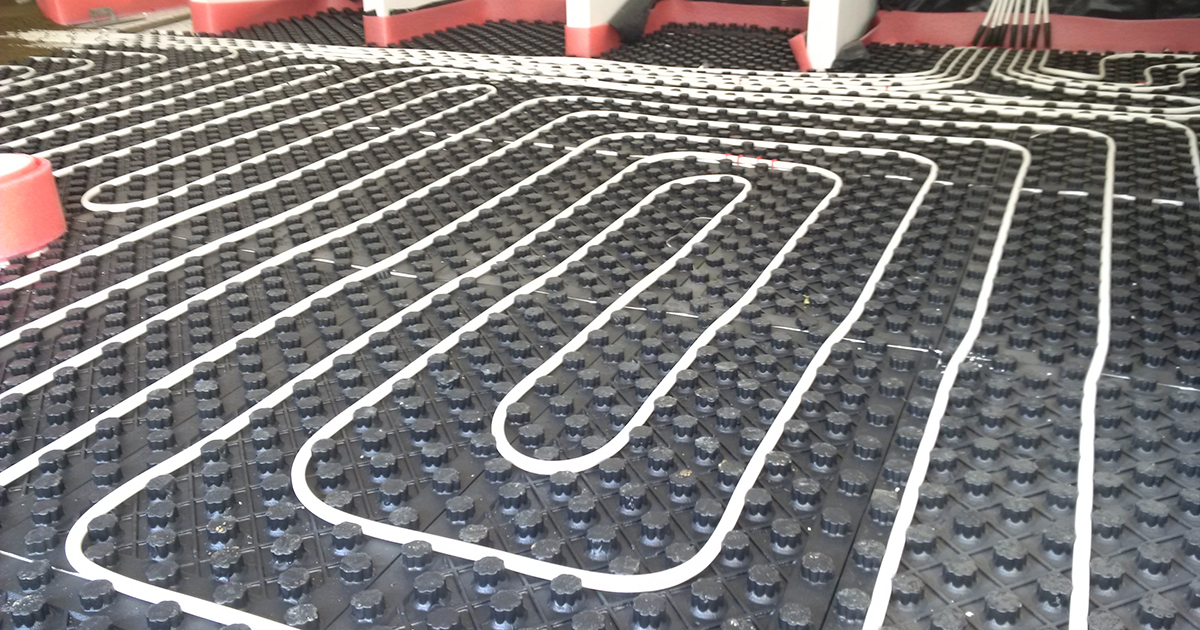An Expert Guide To Underfloor Heating Installation: Everything You Need to Know

At Ambiente Systems UK we’ve been specialising in the design, manufacture and supply of hydronic underfloor heating (UFH) for over a decade. Our dedicated and knowledgeable expert team thrives on developing innovative, new products and systems that allow us to stay at the forefront of the market. Underfloor heating is our specialty and we focus solely on being good at it.
No matter how challenging your project parameters may be, we are certain that we can provide an underfloor heating system that will meet your needs. In the unlikely instance that one of our standard range doesn’t meet your requirements, we have the facility to assemble bespoke systems to meet non-standard or challenging requirements.
It is also important that we support you in the installation of your UFH, to ensure a safe, swift and professional installation. We provide a wealth of resources, including our underfloor heating installation guides will ensure a successful installation every time.
Why underfloor heating?
Underfloor heating has risen in popularity in recent years and is now seen as a competitive rival to traditional radiator heating methods due to its measured efficiency. Using lower flow temperature and heating from the floor upwards, UFH can be up to 50% more efficient than a radiator system. Plus, if you’re concerned about the environment like we are, then it’s also great to note that UFH uses 15-40% less energy than radiator alternatives.
It is probably now clear why you should choose underfloor heating but there are further advantages! UFH is efficient, silent and design-friendly. It can be laid in both new and existing homes so you can incorporate it into your project regardless of the property age.
What to consider when installing underfloor heating?
UFH is a general term for heating installed within the floor construction, but it is important to be aware of the different types of underfloor heating systems. It is important to research effectively which type of UFH will be most suited to your project.
There are two main types of underfloor heating system and these are known as electric underfloor heating (sometimes known as a dry system), and hydronic underfloor heating (sometimes known as a wet system).
What is electric underfloor heating?
Electric underfloor heating is composed of a network of heating wires laid beneath the floor. The wires usually sit above a layer of insulation to ensure the heat does not travel downwards. Electric UFH comes either fixed to a mat, which is rolled out across the floor area, or sometimes loose wires, for maximum flexibility of installation. The heating wires are then covered with a levelling latex prior to tiling, or sometimes actually installed within the tile adhesive layer.
Electric UFH can be used in many applications – it has the advantage of being low-profile and unobtrusive, so can be incorporated without too much impact on the floor-to-ceiling height. The other main advantage is its quick response time and excellent heat output – ideal for rooms like bathrooms, where users want a quick and effective heating method. Electric underfloor heating, however, is more expensive to run.
What is hydronic underfloor heating?
Hydronic underfloor heating consists of a network of pipes laid in the floor construction, with warm water flowing around and providing the heating method, through the floor.
Hydronic UFH systems are best installed at the new-build stage, but also can be installed within existing properties. These systems are efficient to run and can also be linked to renewable heat sources such as air-source heat pumps and solar thermal systems.
While electric UFH systems are typically more suited to small areas like bathrooms, hydronic systems are suited to larger areas, whole properties. The systems work most effectively when they are left running constantly, even if at a low temperature.
A benefit of any UFH system is the flexibility of control. Via a room thermostat in each area, the system can be programmed more maximum efficiency, as well as to suit the lifestyle and building use. See our video guides for how to programme the thermostats.
Hydronic UFH systems are more complex to install, with electric UFH systems being more of a DIY solution. However, you should take into account the long-term running cost of an electric system as opposed to a higher upfront cost of installing a hydronic UFH system but the longer-term efficiency of the system.
Here at Ambiente, we’re more than happy to supply the names of qualified installers in your area to ensure that your UFH is installed by people we trust to do the job right. Most plumbers are aux fait with underfloor heating systems too and will be able to install our Ambiente systems with a little of our help.
If you’re unsure about the right choice of flooring to use with our systems then we’re happy to answer any questions you may have. It is important that Ambiente is always made aware of the proposed floor coverings in each area of a property where UFH will be laid ahead of the designs being produced. This is so that we can factor the resistance of the chosen coverings into the designs to accurately calculate the heat outputs.
Expert underfloor heating installation guides: why are they important?
Just like any project, there are standards that must be adhered to during the installation process. Due to the positioning of underfloor heating pipework, it will be difficult (if not impossible) to access after it has been installed. Rectifying mistakes or damage post-installation can be costly, frustrating and time-consuming.
That’s why it’s important to get the installation right first time relying on our underfloor heating installation instructions.
At Ambiente, we offer extensive technical support to help our customers understand both the nature of our products, as well as how they integrate with other parts of the building fabric. By providing Underfloor heating installation guides and informative videos on the installation process, we help you to install consistently to a professional standard.
We want to help you build your reputation and brand by furthering your skills and most of all install UFH efficiently so you can be the best in your game.
We put so much time into developing our UFH systems, to make sure that the product you receive is not only fit for purpose but is easy to install and maintain. While we don’t employ any installation engineers, we can certainly make recommendations from our network of contacts and you can speak to our technical team for expert installation knowledge
How to ensure a successful underfloor heating installation
We also appreciate that, apart from quality products and systems, there may be other challenges around installing UFH systems. We believe that an awareness of these challenges and a solid plan is the best way to ensure that they cause minimal disruption.
A common issue that can occur is where the subfloor preparation has not been done on site for when the installers arrive. It is always prudent to call ahead of time, or better still visit a site, to check that the site is ready for installation – i.e. that the insulation is all in place and free from other trades etc.
Another challenge can be when the floorplans change without notification between the designs being done and the installation process. Again, being proactive ahead of time will help here, to ensure that the latest floorplans and designs accurately reflect what is actually happening on site.
It is essential that installers follow our UFH designs to the last detail – one item, in particular, is the pipe coil cuts chart that we provide. If this is not adhered to, the pipe coils supplied will not be used in the most efficient way, which may cause you to run out during installation, which can cause unnecessary delays.
Once the UFH system is installed, it is important to minimise foot traffic and access over the system, prior to the screed or final board layer is installed. Excessive foot traffic over installed UFH systems can cause damage to both the pipework and the boards, especially in the case of more delicate refurbishment solutions. The critical thing here is to ensure that the screed is scheduled as soon as possible after the UFH installation, to reduce this risk.
Ambiente knows every project, no matter how big or small is important. That’s why you need to choose an underfloor heating supplier you can trust to provide you with high-quality materials and designs for your project. We make bespoke UFH products and with our useful installation resources that you can use to make sure every project is completed to the highest standard.
Plus, we’ve got our customers covered in the unlikely event of a fault on our part because Ambiente pipework is guaranteed from product defect for 75 years so you can have complete peace of mind.
Our extensive stock is usually available for next-day delivery and our underfloor heating data-sheets give easy to digest product overviews of our products. So if you’ve got a project coming up, require underfloor heating technical support, need a quote or want to learn more about the benefits of UFH then don’t hesitate to contact us.
Did you find this article useful? You may enjoy:
Installers guide to UFH Wiring
Underfloor Heating design: A comprehensive guide
This article was written by Robert Tuffin.
Robert is the General Manager at Ambiente and has been working in the underfloor heating industry since 2012.
Date last reviewed/updated: 25.04.2019






